Showing 97–108 of 108 resultsSorted by popularity
-
Sale!

Baleria Purple Prince 21cm Pot
21cm Pot Range, All Plants, Full Sun Plants, Semi Shade Plants, Shrubs, Bushes and Groundcovers on SaleOriginal price was: R215.00.R119.99Current price is: R119.99.Add to cartBaleria Purple Prince 21cm Pot
-
Sale!
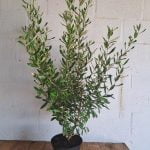
Anastrabe Integerrima 21cm Pot
21cm Pot Range, All Plants, Full Sun Plants, Hedging Plants, Indigenous Plants, Semi Shade Plants, Shrubs, Bushes and Groundcovers on SaleOriginal price was: R225.00.R129.99Current price is: R129.99.Add to cartAnastrabe Integerrima 21cm Pot
-
Sale!
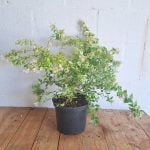
Abelia Francis Mason 21cm Pot
21cm Pot Range, All Plants, Full Sun Plants, Semi Shade Plants, Shrubs, Bushes and Groundcovers on SaleOriginal price was: R215.00.R119.99Current price is: R119.99.Add to cartAbelia Francis Mason 21cm Pot
-
Sale!
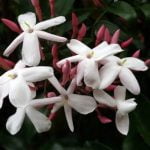
Chinese Jasmine 10lt
All Plants, Climbing Plants, Full Sun Plants, Semi Shade Plants, Shrubs, Bushes and Groundcovers on SaleOriginal price was: R300.00.R235.00Current price is: R235.00.Add to cartJasminum polyanthum 10lt
Common Name: Chinese Jasmine, White Jasmine, Pink JasmineFull Sun
Semi Shade
Moderate Watering
Prune Regularly
Feed MonthlyJasminum polyanthum, commonly known as Pink Jasmine, Chinese Jasmin or White Jasmine, is a species of flowering plant in the Oleaceae family. It is a vigorous, climbing evergreen vine native to China. This species is widely cultivated as an ornamental plant and is popular for its sweetly scented white flowers.
Leaves: The leaves are glossy, dark green, and compound, typically consisting of five to nine leaflets.
Flowers: The flowers are the most attractive feature of this plant. They are small, white, and star-shaped, and they bloom in clusters, filling the air with a delightful, sweet fragrance. The flowers often have a pink tinge on the outside of the petals, which is why it is also called “Pink Jasmine.”
Growth habit: Jasminum polyanthum is a vigorous, climbing vine that can reach heights of up to 6m or more.
Growing conditions: This jasmine species prefers a sunny to partially shaded location and well-draining soil. It is relatively easy to grow and can adapt to a range of conditions, making it a popular choice for home gardens and indoor cultivation.
Blooming season: Jasminum polyanthum typically blooms in late winter to early spring, although it may also flower intermittently throughout the year in favorable conditions.
Pruning: Regular pruning is beneficial to maintain the plant’s shape and promote healthier growth. Prune the vine after flowering to remove any dead or damaged growth and to keep it in check.
Uses: Pink Jasmine is often grown for its ornamental value, especially for its beautiful flowers and pleasant fragrance. Its climbing habit makes it suitable for covering trellises, fences, walls, or pergolas. Some people also grow it indoors in containers, allowing the vine to trail and cascade.
-
Sale!

Ekebergia Capensis Pondo 20lt
Original price was: R425.00.R325.00Current price is: R325.00.Add to cartEkebergia Capensis Pondo 20lt
-
Sale!

Brachylaena Discolor 20lt
Original price was: R550.00.R325.00Current price is: R325.00.Add to cartBrachylaena Discolor 20lt
Common Names: Coastal Silver Oak, KusvaalbosFull Sun
Low Watering
Wind Tolerant
Evergreen
IndigenousFast-growing, spreading tree that grows up to 7m in height with dark green leaves that are silver-white underneath.
They get creamy, white flowers in Spring and can be used as an excellent wind breaker. Ideal for coastal gardens too.Brachylaena discolor, commonly known as the Coast Silver Oak or Wild Silver Oak, is a species of flowering tree that belongs to the Asteraceae family. It is native to the coastal regions of Southern Africa, including countries such as South Africa, Mozambique, and Zimbabwe.
Appearance: The Coast Silver Oak is a medium-sized tree that can grow up to 10-20 meters in height. It has a spreading crown with a generally rounded shape. The leaves are simple, alternate, and elliptical, measuring around 6-10 cm long. The upper side of the leaves is glossy green, while the underside is covered with a silvery-grey pubescence, which gives it its distinct appearance.
Flowers: The tree produces small, inconspicuous flowers in clusters. The flowers are usually greenish-yellow in colour and are borne on short, slender stalks.
Fruits: The fruit of Brachylaena discolor is a small, brownish achene, which is a type of dry, indehiscent fruit typical of many members of the Asteraceae family.
Habitat: This species is typically found in coastal forests, riverine forests, and wooded areas near the coast. It prefers sandy and well-drained soils.
Uses: Traditionally, the bark of the Coast Silver Oak has been used for medicinal purposes by some local communities. The tree is also valued for its ornamental qualities due to the silvery foliage.
Conservation status: As with many plant species, Brachylaena discolor faces threats from habitat loss and other human activities. The conservation status of this species may vary in different regions, so it is important to consult local conservation authorities for the most up-to-date information.
-
Sale!
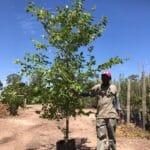
Celtis Sinensis Tree 40lt
Original price was: R1,250.00.R695.00Current price is: R695.00.Add to cartCeltis Sinensis Tree 40lt
Common Name: Chinese HackberryFull Sun
Semi Shade
Medium Watering
Drought Resistant
Deciduous TreeCeltis sinensis is commonly known as Chinese Hackberry and is a species of flowering tree in the Cannabaceae family. It is native to various regions in East Asia, including China, Japan, Korea, and Taiwan. This deciduous tree is known for its adaptability and has been introduced and cultivated in other parts of the world as an ornamental tree.
Appearance: Chinese Hackberry is a medium-sized tree that can grow up to 10-20 meters in height. It has a rounded crown and a moderately spreading canopy. The bark is grey to light brown, and the branches are often covered with corky ridges.
Leaves: The leaves are alternate, simple, and have a serrated or toothed margin. They are typically ovate or elliptical and have a glossy green colour. In the fall, the leaves turn yellow or yellow-green before shedding.
Flowers: The tree produces small, inconspicuous greenish flowers in spring, usually in April or May, depending on the region. The flowers are not showy, but they are an essential food source for pollinators.
Fruits: After flowering, Celtis sinensis develops small, round, berry-like fruits that ripen to a dark purple or black colour. These fruits are often eaten by birds, contributing to seed dispersal.
Habitat: Chinese Hackberry is adaptable to various soil types and can tolerate a range of environmental conditions, including both moist and dry sites. It is commonly found in woodlands, forests, and along riverbanks.
Uses: Celtis sinensis is valued as an ornamental tree in landscapes and urban areas due to its attractive foliage, interesting bark texture, and adaptability to urban conditions. It can be planted as a shade tree, street tree, or in parks and gardens.
-
Sale!

English Oak Tree 20lt
Original price was: R550.00.R349.99Current price is: R349.99.Add to cartQuercus Robur 20lt
Common Name: English Oak TreeFull Sun
Low Watering
Wind Tolerant
Deciduous Tree -
Sale!

Tahiti Lime Tree 100lt
Original price was: R3,495.00.R1,999.99Current price is: R1,999.99.Add to cartTahiti Lime Tree 100lt
Full Sun
Semi Shade
Low WateringBeautiful citrus tree and fruiting age so you will have limes in no time.
-
Sale!
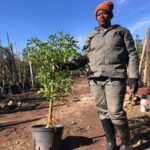
Cussonia Spicata 20lt
Original price was: R550.00.R349.99Current price is: R349.99.Add to cartCussonia Spicata 20lt
Common Name: Cabbage TreeFull Sun
Evergreen
Indigenous
Wind TolerantCussonia spicata, commonly known as the cabbage tree, is a species of tree native to parts of southern and eastern Africa, including South Africa, Eswatini (Swaziland), Zimbabwe, Mozambique, and eastern tropical Africa.
🌳 General Description
Family: Araliaceae
Common Names: Cabbage tree, Spiked Cabbage Tree
Height: Typically grows 5–15 meters tall
Growth Form: Often has a single, thick trunk with a sparse, rounded crown🍃 Leaves
Type: Large, leathery, palmately compound (resembling fingers on a hand)
Arrangement: Clusters at the ends of thick branches
Colour: Blue-green to grey-green
Appearance: The leaf shape and arrangement give the tree a cabbage-like look🌸 Flowers and Fruit
Flowers: Small, greenish-yellow, borne in dense, spiky heads on tall, branched stalks
Blooming Season: Late summer to autumn
Fruit: Small, roundish drupe that turns purple when ripe🐘 Ecological Role
Wildlife: Leaves and bark are browsed by elephants and other herbivores
Birds and Insects: Attracted to flowers for nectar and fruit for food -
Sale!
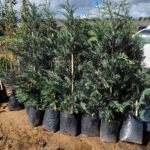
Cupressus Leylandii 20lt
Original price was: R650.00.R399.99Current price is: R399.99.Add to cartCupressus Leylandii 20lt
Common Name: Leyland Cypress Tree
-
Sale!
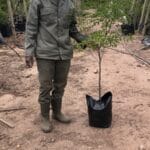
Caesalpinia Ferrea (Leopard Tree) 20lt
Original price was: R650.00.R439.99Current price is: R439.99.Add to cartCaesalpinia Ferrea 20lt
Common Name: Leopard TreeCaesalpinia ferrea, commonly known as Leopard Tree or Brazilwood, is a species of flowering tree belonging to the Fabaceae family. It is native to various regions in South America.
Appearance: The Leopard Tree is a medium-sized deciduous tree that can reach a height of 10 to 15 meters. It has an open, spreading crown with a rounded or umbrella-like shape. The tree’s bark is distinctive, with a mottled pattern of dark brown and light grey, resembling the coat of a leopard, which is the origin of its common name.
Leaves: The leaves are bipinnately compound, meaning they are divided into smaller leaflets, giving them a fern-like appearance. The leaflets are small and arranged along a central rachis (main axis). The leaves are usually green during the growing season but turn yellow or yellow-green before shedding in the fall.
Flowers: The tree produces small, bright yellow flowers with long stamens that are held in clusters. The flowers are attractive and serve as a nectar source for various pollinators, such as bees and butterflies.
Fruits: After flowering, Caesalpinia ferrea forms elongated pods that contain seeds. These pods are woody and brown in colour.
Habitat: The Leopard Tree is adaptable to various soil types and can thrive in both moist and drier conditions. It is commonly found in tropical and subtropical regions, especially in open woodlands and savannas.
Uses: The wood of Caesalpinia ferrea is durable and has been used for various purposes, including construction, furniture, and tools. In some regions, the tree is also valued for its ornamental qualities and is planted in parks, gardens, and along streets.
